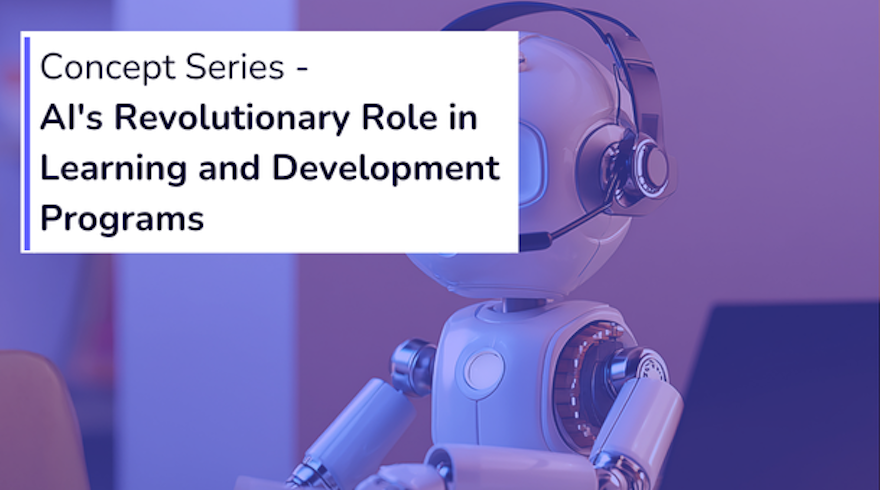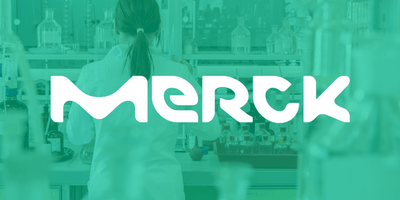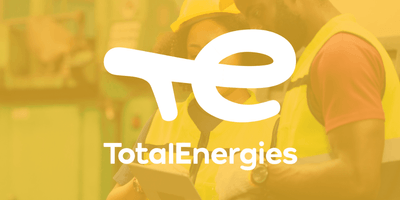Artificial Intelligence (AI) has emerged as a transformative force across industries, and Learning and Development (L&D) is no exception. As organizations strive to create more effective training programs and streamline their educational processes, AI technologies are becoming increasingly integral to modern L&D strategies. This comprehensive guide explores how AI is revolutionizing learning experiences and why it's becoming essential for organizations to integrate AI-powered solutions into their standard operating procedures for training and development.
What is AI in Learning and Development?
AI in Learning and Development refers to the application of artificial intelligence technologies to enhance, automate, and personalize educational experiences within organizational training programs. This includes machine learning algorithms, natural language processing, predictive analytics, and automated content generation tools that work together to create more efficient and effective learning environments.
Core Components of AI-Powered L&D Systems
- Machine Learning Algorithms: Analyze learner behavior and performance patterns
- Natural Language Processing: Enable intelligent chatbots and content analysis
- Predictive Analytics: Forecast learning outcomes and identify at-risk learners
- Automated Content Creation: Generate personalized learning materials
- Adaptive Learning Platforms: Adjust content difficulty based on learner progress
When implementing AI in L&D programs, organizations often need to update their existing standard operating procedure document to reflect new technological capabilities and processes. This ensures that all stakeholders understand how AI tools integrate with traditional training methods.
The Critical Importance of AI in Modern L&D Programs
Enhanced Personalization and Adaptive Learning
One of the most significant advantages of AI in L&D is its ability to create personalized learning experiences. Traditional training programs often follow a one-size-fits-all approach, which can leave some learners behind while boring others. AI-powered systems analyze individual learning patterns, preferences, and performance to create customized educational pathways.
Organizations implementing AI-driven personalization should establish clear standard operating procedures that outline how the system collects and processes learner data, ensuring both effectiveness and privacy compliance.
Key Benefits of AI-Driven Personalization:
- Individualized learning paths based on skill gaps and career goals
- Dynamic content adjustment based on learner comprehension
- Optimal pacing that matches individual learning speeds
- Targeted reinforcement of weak areas
- Advanced learner progression through accelerated tracks
Automated Content Creation and Curation
AI technologies excel at generating and curating educational content at scale. This capability is particularly valuable for organizations that need to rapidly update training materials or create content for diverse audiences. AI can analyze existing materials, industry trends, and learner feedback to produce relevant, up-to-date training content.
To effectively leverage automated content creation, organizations should develop comprehensive sops that define quality standards, review processes, and approval workflows for AI-generated materials.
Intelligent Performance Analytics and Insights
AI-powered analytics provide unprecedented visibility into learning program effectiveness. These systems can track numerous metrics simultaneously, identifying patterns that human analysts might miss. This data-driven approach enables L&D professionals to make informed decisions about program improvements and resource allocation.
Advanced Analytics Capabilities Include:
- Learning Engagement Metrics: Time spent, interaction rates, and completion patterns
- Knowledge Retention Analysis: Long-term retention rates and knowledge decay patterns
- Skill Gap Identification: Automated detection of individual and organizational skill deficiencies
- Predictive Modeling: Forecasting learner success and identifying intervention opportunities
- ROI Measurement: Connecting learning outcomes to business performance metrics
Implementing AI in Standard Operating Procedures for L&D
Developing AI-Enhanced SOP Documentation
When integrating AI into L&D programs, organizations must update their standard operating procedure examples to include AI-specific processes and protocols. This documentation ensures consistent implementation and helps staff understand their roles in AI-enhanced learning environments.
Essential Elements for AI-Enhanced SOPs:
- Data Collection Protocols: Procedures for gathering and processing learner data
- AI System Monitoring: Regular checks for system performance and accuracy
- Quality Assurance Measures: Validation processes for AI-generated content
- Privacy and Security Standards: Protection of sensitive learner information
- Escalation Procedures: When and how to involve human intervention
Organizations should consider using specialized sop software that can integrate with AI systems to automatically update procedures based on system changes and learning outcomes.
Creating Standard Operating Guidelines for AI Tools
Effective standard operating guidelines for AI in L&D should address both technical and pedagogical aspects of implementation. These guidelines help ensure that AI tools enhance rather than replace human expertise in learning design and delivery.
Technical Implementation Guidelines:
- System integration requirements and compatibility checks
- Data migration and cleansing procedures
- User access controls and permission management
- Backup and recovery protocols
- Performance monitoring and optimization procedures
Pedagogical Implementation Standards:
- Learning objective alignment with AI capabilities
- Human oversight requirements for AI-generated content
- Learner feedback integration processes
- Assessment validity and reliability standards
- Accessibility compliance for AI-powered content
Strategic Benefits of AI Integration in L&D Programs
Scalability and Cost Efficiency
AI enables L&D programs to scale efficiently without proportional increases in human resources. Automated processes can handle routine tasks, freeing up L&D professionals to focus on strategic initiatives and complex problem-solving. This scalability is particularly valuable for organizations experiencing rapid growth or those with geographically distributed workforces.
When documenting these scalability benefits, organizations should update their standard operating process documents to reflect new capacity planning and resource allocation methods enabled by AI technologies.
Continuous Learning and Improvement
AI systems continuously learn from interactions and outcomes, leading to ongoing improvements in program effectiveness. This self-improving capability means that L&D programs become more sophisticated and effective over time, without requiring constant manual intervention.
Continuous Improvement Mechanisms:
- Algorithmic Learning: Systems improve based on learner interactions
- Content Optimization: Automatic refinement of educational materials
- Pathway Enhancement: Learning routes become more effective over time
- Predictive Accuracy: Better forecasting of learner needs and outcomes
Real-Time Support and Intervention
AI-powered chatbots and virtual assistants provide immediate support to learners, answering questions and providing guidance 24/7. This real-time support capability significantly enhances the learning experience and reduces the burden on human instructors and support staff.
Best Practices for AI Implementation in L&D
Writing Standard Operating Procedures for AI Integration
Successful AI implementation requires careful planning and documentation. Organizations should focus on writing standard operating procedures that address both the technical and human aspects of AI integration. These procedures should be comprehensive yet flexible enough to accommodate rapid technological changes.
Key Considerations for SOP Development:
- Stakeholder Involvement: Include input from IT, L&D, legal, and end-users
- Phased Implementation: Break down implementation into manageable phases
- Change Management: Address resistance and ensure smooth transitions
- Training Requirements: Define necessary training for staff using AI tools
- Success Metrics: Establish clear KPIs for measuring AI implementation success
Creating an SOP Framework for AI-Powered L&D
When creating an sop framework for AI-powered L&D, organizations should consider using standardized templates and formats that can be easily updated as technology evolves. Modern standard operating procedure software can help maintain consistency and ensure that all stakeholders have access to the most current procedures.
Essential SOP Categories for AI in L&D:
- System Administration: User management, system updates, and maintenance
- Content Management: Creation, review, and approval of AI-generated materials
- Data Management: Collection, storage, and analysis of learner data
- Quality Assurance: Monitoring and validation of AI system performance
- Incident Response: Procedures for addressing system failures or data breaches
Overcoming Implementation Challenges
Addressing Technical and Cultural Barriers
Implementing AI in L&D programs often faces both technical and cultural challenges. Technical barriers may include system integration issues, data quality problems, and insufficient infrastructure. Cultural barriers often involve resistance to change and concerns about AI replacing human jobs.
Organizations should develop detailed sop example documents that address common implementation challenges and provide step-by-step guidance for overcoming them. These examples serve as valuable references for implementation teams and help ensure consistent approaches across different departments.
Ensuring Data Privacy and Security
AI systems in L&D collect and process significant amounts of personal data, making privacy and security paramount concerns. Organizations must establish robust standard operating protocol documents that address data protection requirements and ensure compliance with relevant regulations.
Privacy and Security Considerations:
- Data encryption and secure transmission protocols
- User consent management and opt-out procedures
- Regular security audits and vulnerability assessments
- Incident response plans for data breaches
- Compliance with GDPR, CCPA, and other privacy regulations
Future Trends and Considerations
Emerging AI Technologies in L&D
The landscape of AI in L&D continues to evolve rapidly, with new technologies and applications emerging regularly. Organizations should design their standard work procedures to be flexible and adaptable to accommodate future technological developments.
Emerging Trends to Watch:
- Virtual and Augmented Reality: Immersive learning experiences powered by AI
- Advanced Natural Language Processing: More sophisticated conversational learning tools
- Emotion AI: Systems that respond to learner emotional states
- Blockchain Integration: Secure credentialing and skill verification
- Quantum Computing: Enhanced processing power for complex learning analytics
Preparing for Continuous Evolution
As AI technologies continue to advance, L&D professionals must remain adaptable and committed to continuous learning. Organizations should establish standard of procedure documents that emphasize ongoing education and professional development for staff working with AI systems.
Conclusion: Embracing AI for L&D Excellence
The integration of AI into Learning and Development programs represents a fundamental shift in how organizations approach employee training and skill development. By leveraging AI technologies, organizations can create more personalized, efficient, and effective learning experiences that drive better business outcomes.
Success in implementing AI-powered L&D programs requires careful planning, comprehensive documentation, and robust standard operating procedures that address both technical and human factors. Organizations that invest in developing clear SOPs and embrace AI technologies will be better positioned to attract, develop, and retain talent in an increasingly competitive marketplace.
As we look to the future, AI will continue to transform the L&D landscape, offering new opportunities for innovation and improvement. Organizations that begin their AI journey now, supported by well-designed standard operating procedures and a commitment to continuous learning, will be best positioned to capitalize on these emerging opportunities and achieve long-term success in their talent development initiatives.





